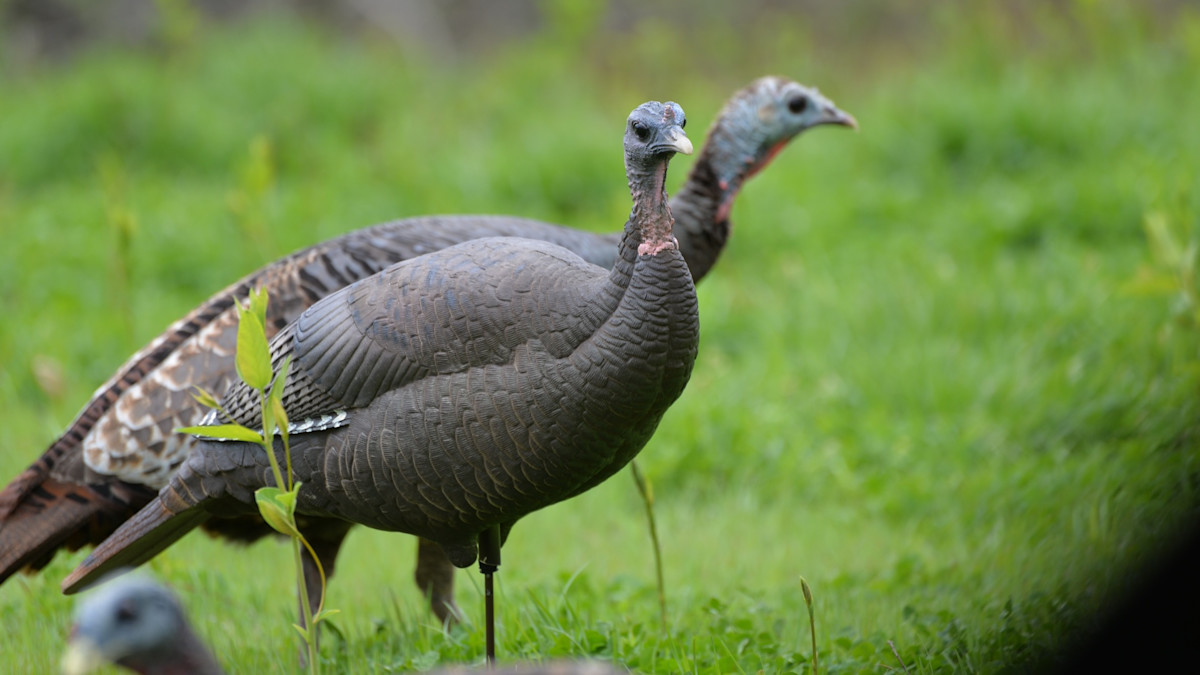
One of the things that bowhunting turkeys taught me is that if you scout out a decent spot and are patient, you’ll have plenty of birds mix in with your decoys. The amount of hens I started calling in when the option to run and gun was off the table was eye-opening. It changed how I hunt spring birds no matter what weapon I’m carrying.
Quality decoys and the right calling can bring in birds all day long. It’s pretty wild how often a hen or two will come in and spend hours in your spread, or at least within earshot. Those live birds can be the ticket to a longbeard, but you have to learn how to keep the ladies around. This all starts with forgetting some of the conventional turkey hunting advice.
Just Keep Calling
Most hunters shut up when a turkey walks in. If it’s a tom, this makes sense because it’s time to go from a turkey hunter to a turkey shooter. Shutting up when hens get close is the wrong idea, however.
If you are lucky enough to have hens come into your spread and stay there, you’ll hear them yelp, cluck, and purr a lot. Turkeys are kind of like a family of raccoons walking by your treestand in the fall, they can’t help but make all kinds of soft noises.
The key here is to have confidence in the conversation. When hens get into my decoys, I reach for my slate call about 90% of the time. Nothing produces soft, content hen calls quite like a slate. You almost can’t overcall in this situation, but you can screw up calling if you don’t understand how to make the right noises.
If you have a grasp on what to say, call away and don’t stop unless one of the live birds starts putting. The goal is to keep the hens content and talking to you and amongst themselves. Sometimes, they won’t say anything back, but that doesn’t mean you can’t call. Most of the time, they will talk as much as you do. This is a recipe for getting a longbeard fired up and is almost always a good scenario.
Take Their Temperature, Then Warm It Up
Some hens come in, squawking away. They are a gift because you can fire them up by simply copying their calls. These hens are either in a bad mood or just out to show a little dominance. Either way, pay attention and keep jawing it up with them. This type of encounter is a no-brainer, and it’s an incredible opportunity to kill a tom.
A lot of hens don’t come in ready to huff and puff. Instead, they peck their way in, preen themselves, bed down in the spread, and just casually chat. You can usually gauge how this will go in the first 30 seconds of the encounter.
When I’m dealing with birds that seem content to be relatively quiet, I try to take their temperature and ramp it up just a bit. If they are tight-lipped, that might mean just some clucks and purrs to keep them around. If they cluck and purr back, it’s time to try a little bit of aggressive yelping and cutting.
Most of the time, they won’t leave, but they also won’t respond aggressively. Sometimes, they seem to rise to the occasion and you can take a hen that started out with lockjaw and get her to work with you to draw in a tom. This is a beautiful thing, and so damn fun.
It’s also a little higher risk and can get them to walk away. If they do, you still have options.
Boomerang Birds
There’s something magical that happens when live turkeys make it into a decoy spread. It’s like they’ve crossed a mental threshold that will keep them coming back. The thing about this is, you have to understand that even if they leave, they are pretty likely to come back if you call to them.
This is common with both hens and jakes. The best way to approach this is if they start to get away, you start to get aggressive. The worst that happens is they walk off to pick bugs somewhere else. But a lot of times, they’ll try to get you to go with them. This creates another conversation opportunity that will be heavy on the yelps.
Sometimes, they just walk away, and there is nothing you can do about it. But if you maintain that contact and keep calling, a lot of times they’ll swing through for round two or three.
While live hens, even vocal hens, in the decoys don’t guarantee a tom will show up, it certainly helps. Plus, it’s one of the best ways to not only learn what real turkeys sound like, but how best to talk to them in close proximity.
That’s a skill that comes in mighty handy every spring.
For more turkey hunting information, check out these articles: If You Want To Kill A Tom, Think Like A Hen, How To Kill A Decoy-Shy Tom, and How To Tag Team Pressured Gobblers.





